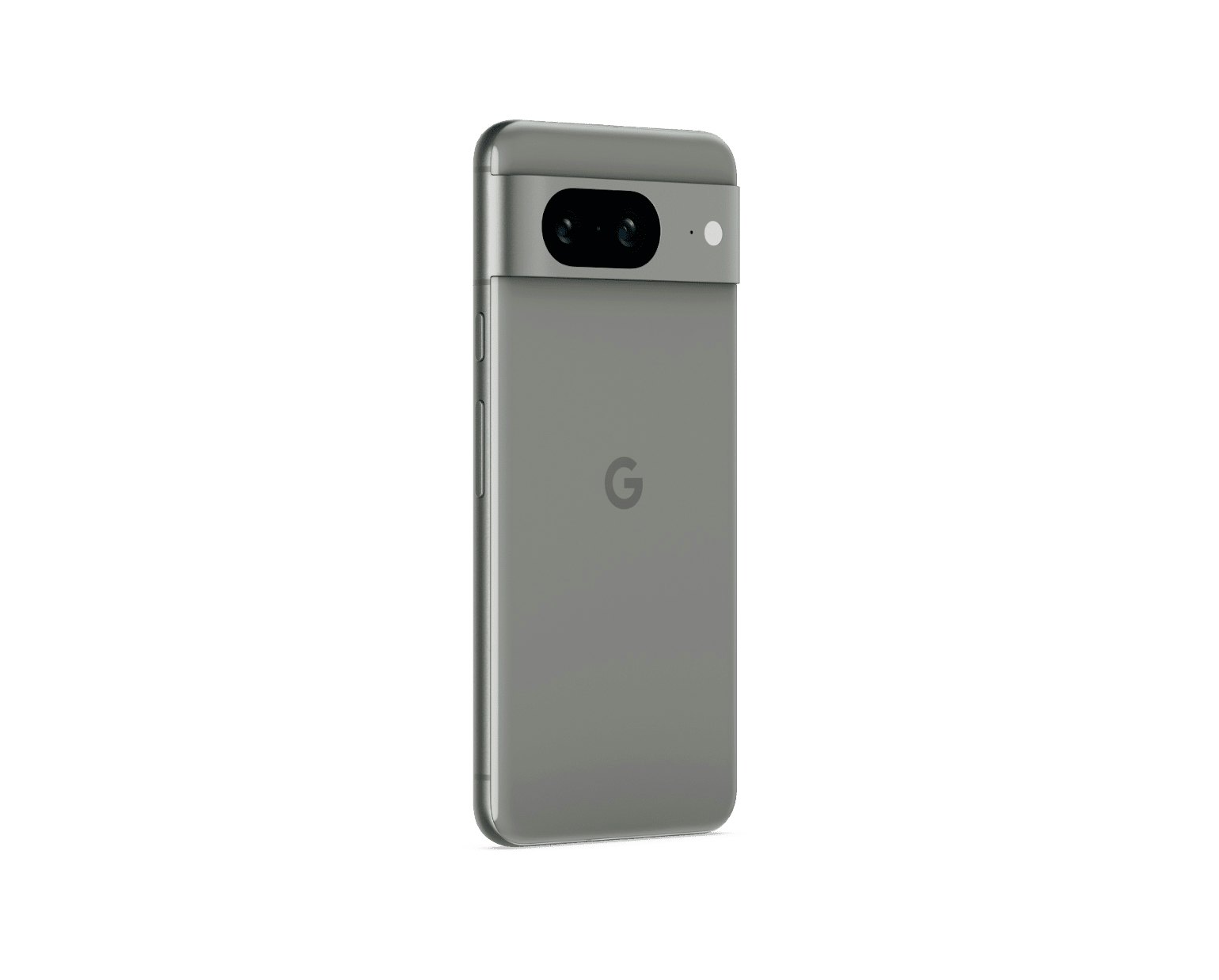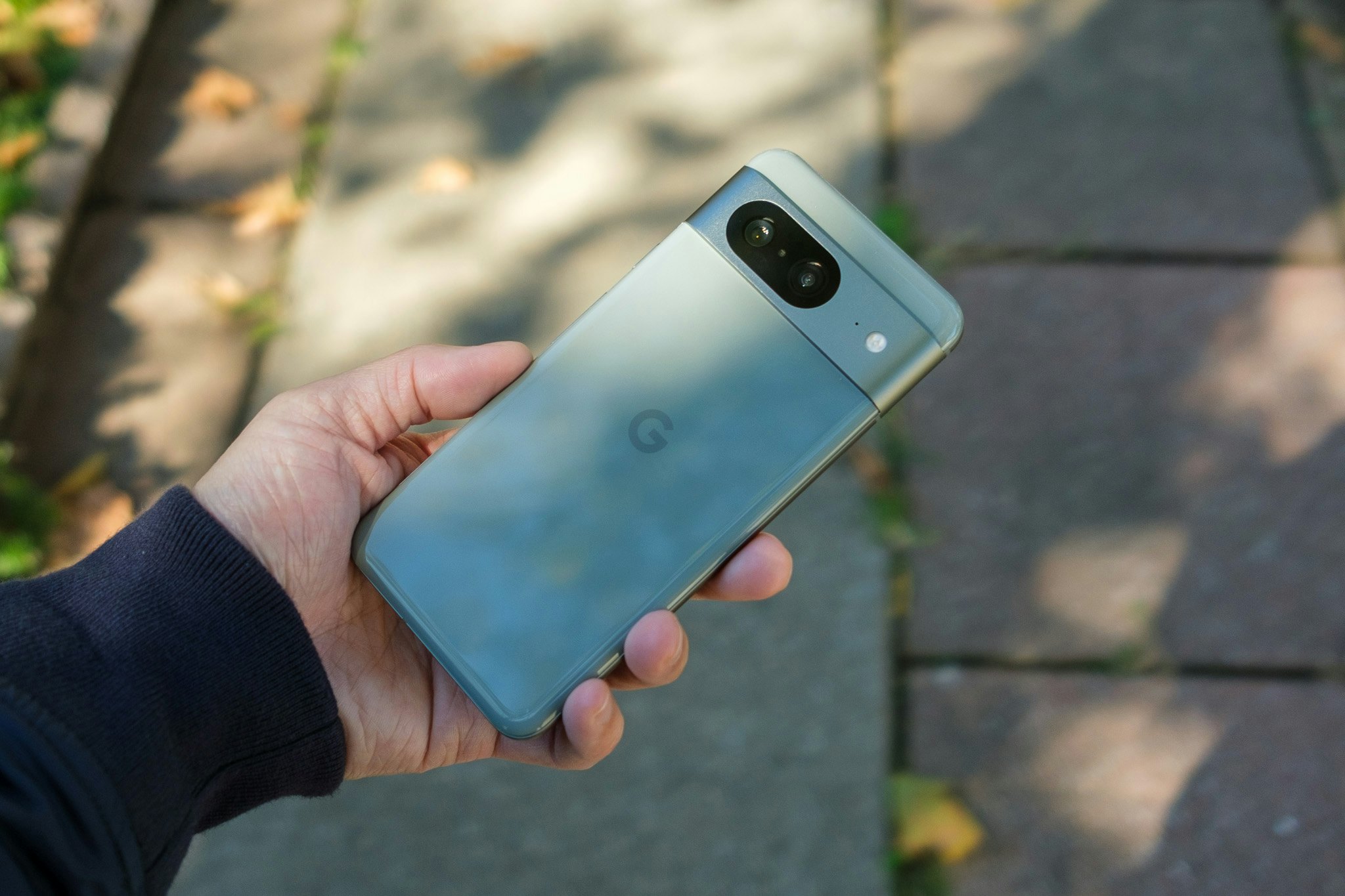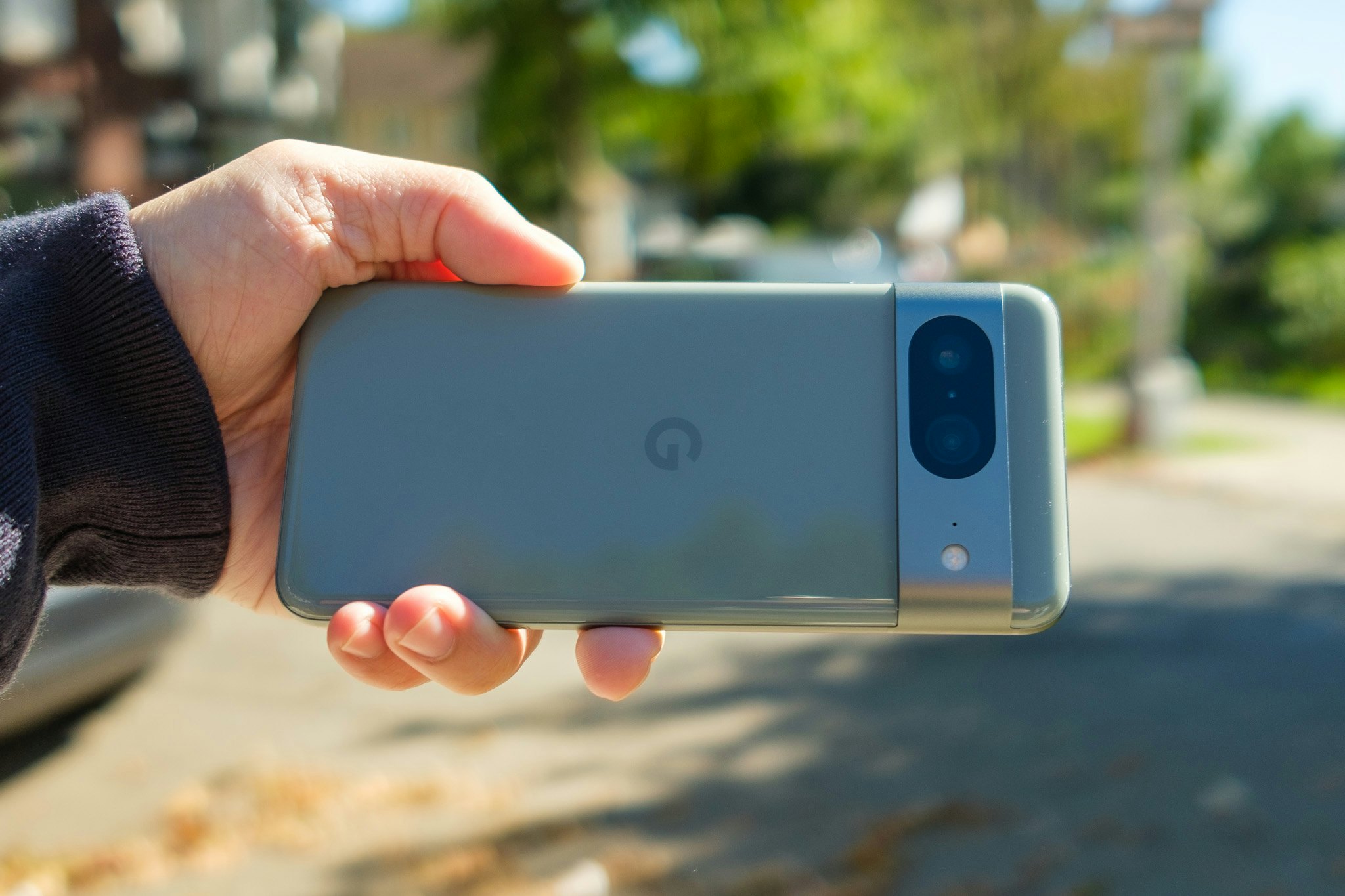
Google wants everyone to see its Pixel 8 and 8 Pro (read our review of the 8 Pro here) as transformative AI-first phones.
AI to help you edit your imperfect photos and videos; AI to summarize long webpages; AI to transcribe annoying phone trees into text-based buttons; AI to generate original wallpapers. And in the near future, generative AI — via Google Assistant with Bard — to help manage the excessive information inside your polished glass slab.
The message couldn't be clearer: AI will make your life better and save you time, and the Pixel 8 is your front-row seat to the revolution in progress.
It's not a new vision for Google — the company has been beating the AI drum for years — but the Pixel 8 is its most ambitious stab at packaging AI as indispensable technology that other phones don't have.
There's just one problem: the AI features shipping in the Pixel 8 are very fleeting. You’ll try them out and then probably forget they exist until the one time you’ll need to use them. It’s the same story as the AI features in past Pixel phones. It's possible that Google Assistant with Bard could be a paradigm shift in the way we use our phones, but until it arrives (whenever that is), the Pixel 8 is just another premium smartphone with a solid design, a very bright screen, and a really great camera system.
The Pixel 8 is Google's best phone hardware yet (eight generations in, it better be), and one that can throw punches with the iPhone 15 and Galaxy S23, but it’s far from the groundbreaking AI phone the company wants you to believe it is.
Google Pixel 8

Perfected Pixel Hardware
I mean it when I say the Pixel 8 is a super nice phone and Google’s finest to date. Design is subjective, but I would say the Pixel 8 is one of the best-looking phones released this year, right up there with the iPhone 15s. Compared to Pixel 7, Google rounded the corners, shaved off 10 grams, and shrank the bezels (especially the “chin”) around the display, which is now a smaller 6.2-inch OLED versus 6.3-inch AMOLED.
My review unit came in “Hazel” glossy finish and I think it looks awesome. It’s not just aesthetics, the Pixel 8 feels solid in the hand without a case. The contoured sides really help make the phone easier to grip in one hand. With the camera bar supporting my index finger, it’s next to impossible for the Pixel 8 to slip out, something I can’t say for other phones.
The always-on “Actua Display” looks spectacular. The Pixel 8 display has the same 2,400 x 1,080 resolution as the Pixel 7, but it’s better in every aspect. The pixels are more tightly packed together because of the smaller display, which means text and photos look just a bit sharper; brightness has jumped up to 2,000 nits (up from 1,400 nits on the Pixel 7); and the refresh rate has increased to 120Hz (up from 90Hz). Simply put: the Pixel 8’s display is fantastic.

A few other hardware improvements I really like: the in-display fingerprint display is lower and easier for thumb access; the haptic feedback is stronger and feels more pleasant to each buzz; Face Unlock now has smarter algorithms with support for mobile payments, passwords, and banking apps; and the stereo speakers have more oomph when it comes to bass.
The rest of the Pixel 8 is pretty great: Wi-Fi 7 (one of the first phones with it), IP68 water and dust resistance, faster 27W wired charging, reverse wireless charging, a physical nano SIM card tray, and 128GB or 256GB of storage with 8GB of RAM.
The new Tensor G3 chip is faster than the G2. AI-based tasks, like transcription, are quicker and more accurate, but Android 14 is well-oiled for the Tensor G3. I noticed the rear of the Pixel 8 sometimes gets toasty, but nothing out of line from past Pixels with Tensor chips.

I have no complaints about battery life with the refresh rate set to 60Hz. I did a little comparison between a fully charged Pixel 8, 7, and 6, and the two older phones, running at 90Hz, drained 15-20 percent while idle overnight compared to the 5 percent for the Pixel 8 at 60Hz. Bump up the refresh rate to 120Hz, though, and the battery life drops at a faster rate, but not as quickly as on the Pixel 6 or 7.
I’ll take the Pixel 8’s all-day battery life at 60Hz over two-thirds of the day at 120Hz. It’s worth pointing out that it feels deceptive that Google advertises the Pixel 8 with a 120Hz refresh rate and it’s not even turned on by default, and battery life is poorer when you do flip the switch. And worse, the fluid scrolling that you’d expect from 120Hz isn’t guaranteed in every app. On more than a few occasions, scrolling the results in Google Discover was a choppy experience. Why put a 120Hz display in the Pixel 8 if it runs best at 60Hz? Why not just stick to the 90Hz in the Pixel 6 and 7?
Excellent Cameras

Whether you accept it or not, it’s pretty obvious to me that we’re hitting a ceiling with smartphone cameras and computational photography. Take any premium smartphone — Pixel, iPhone, Galaxy, OnePlus — and the year-over-year improvements to photo and video quality are diminishing. All new phone cameras take photos that are a little sharper, a little brighter in low light, and have a little more dynamic range. Emphasis on a little.
There’s only so much that can be improved on phone cameras when most people are seeing the photos on Instagram or Twitter/X. It’s no wonder that Google is focusing more on AI editing tools such as Best Take, Magic Eraser and Editor, and Audio Magic Eraser.
The Pixel 8’s cameras — a 50-megapixel main and 12-megapixel ultrawide lens on the rear, plus a 10.5-megapixel selfie lens — are excellent, with the main lens having a larger sensor for better low-light shots, and the ultrawide finally being a wider 0.5x field of view (126-degree) versus the 0.7x FOV (114-degree) on the Pixel 7.
Pictures from the rear cameras have rich colors and the Pixel’s signature deep high contrast. No surprise there. Selfies look good, though, I wish the front-facing camera had autofocus like the Pixel 8 Pro.
Let’s play “spot the difference.” Can you spot any meaningful difference between the Pixel 8, Pixel 7, and iPhone 15 photos in the shots below?



The above and below photos were taken with each phone’s main camera. The top set in daylight and the bottom at night. Sure, zoom in and you might be able to make out some differences, but how often are you doing that? All of these photos look good.



The same goes for the ultrawide in the Pixel 8. Google says it’s increased the light sensitivity. But can you even spot any major differences?



I used to really care about the sharpness between one phone camera and another. But the differences are so negligible that they’re not even worth nitpicking.



If you want a great phone camera that takes great photos, the Pixel 8 does the job. Any preference comes down to color science and image processing.
My colleague, Inverse Senior Editor James Pero, has already gone in-depth on Google’s new AI camera/editing features in his Pixel 8 Pro review so I’ll skip right to the point — I think they’re gimmicks. When Magic Eraser works properly, it does feel like a genuinely useful cheat code for removing unwanted things in a photo. But most of the time, the results are bad.
Take a look at the examples below. I don’t think anybody can say, with a straight face, that Magic Eraser works as well as it’s advertised.


My experience with Magic Editor was similar to James’ — sometimes it works, but most times it’s embarrassingly terrible. Yes, yes, Google warns you that Magic Eraser is basically a beta/experimental feature. But marketing the feature as a main selling point... just oof. Good luck, “Magic Editing” a better photo in post. Better to learn how to take good photos than pray AI can fix an average or bad one. Magic Editor is slow, too. I timed how long it took to generate images and got a range from 12-23 seconds. I literally twiddled my thumbs waiting for Magic Editor to do its thing. It also requires an internet connection and the photo you want to edit needs to be backed up first.
After seeing some of the comical results and spending more time than I wanted manually masking the edges of subjects that I wanted to move around, I’ve concluded Magic Eraser just isn’t all that magical. It’s a cute party trick that might work well on a photo with subjects that are easily separable from the background. But using Magic Eraser on busier photos will almost always disappoint.

I don’t even know what the heck is going on in the below image. Magic Editor generated weird blobs after removing the guy in front?

And don’t get me started on Best Take. I see the value in creating a single photo where everyone is looking at the camera, big smiles on their faces (or has the expression that you want in the shot). But I hate that it’s creating these false memories. Reality isn’t perfect; it’s the imperfect that makes moments our memories. Google’s defense is that Best Take is merely a tool that makes it easier to create a better — nay, perfect — photo, and not a creative decision that’s forced onto you when you press the shutter button. That is technically true, but it still feels like we’re crossing a line here, even though photo manipulation has existed for as long as photography has.
Better Luck with AI Next Time

Long story short, the Pixel 8 is the same proposition it’s always been: a great camera first and foremost. This time around, Google’s really stepped up the industrial design, polishing the details to really compete with the iPhones and Samsung Galaxies out there.
But for all of Google’s talk about AI this and AI that, the Pixel 8’s AI features — at least the ones that are shipping at launch — are forgettable at best. They simply do not make the Pixel 8 stand above a comparable iPhone or Galaxy. Again, that may all change once Assistant with Bard comes out in December, but we won’t know until then. That it’s not even ready at launch and will release to “select” users suggests it won’t change anything.
At the end of the day, the Pixel 8 is merely a better version of the Pixel 7. Buy it for the slick hardware, great cameras, good battery life, and excellent display, not the bag of AI gimmicks.







